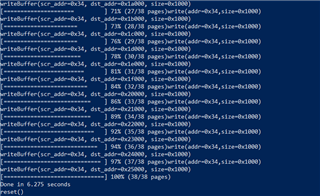Hi Folks,
I am getting in trouble with SoftDevice activation. Indeed, my application did not return from the "nrf_sdh_enable_request()" call, more precisely it hangs into the "sd_softdevice_enable".
I want to mention that I compile the S140 file within my application so I did not flash independently the Softdevice hex previously into my target. Maybe my linker script file is not OK or my sdk_config.h file
My questions are: Is it possible to flash in one shot softdevice + application ?if yes, how must be configured the linker script file?
I have also noticed that the "sd_softdevice_enable" function refers to a sd_softdevice_enable to a SVCALL so I suppose S140 must be flashed first in that configuration so my Arduino board must be in a hard fault reset state. Am I right?
Another file contains a pure C definition , it is located in the named "ser_softdevice_handler.c". Can it serve to implement Softdevice without in a single application file?
I know I ask a lot so I thank u a lot as well.
The best.
Seb




